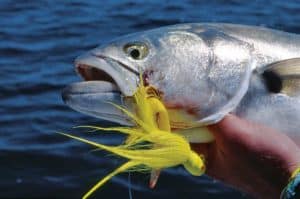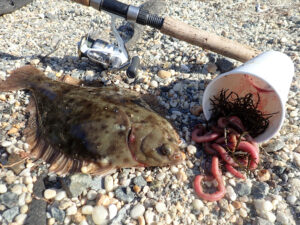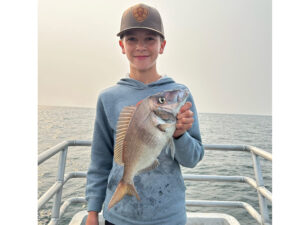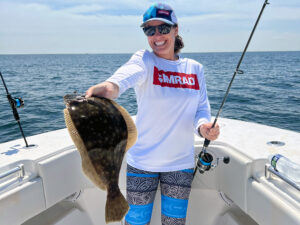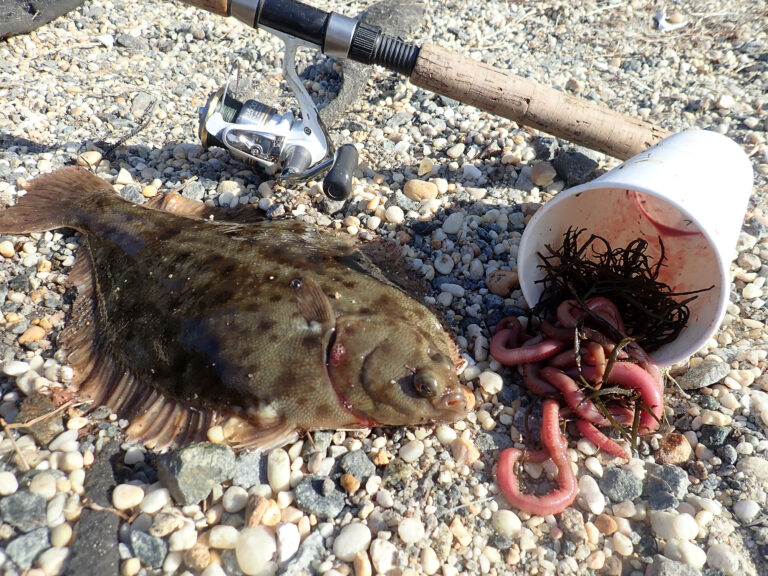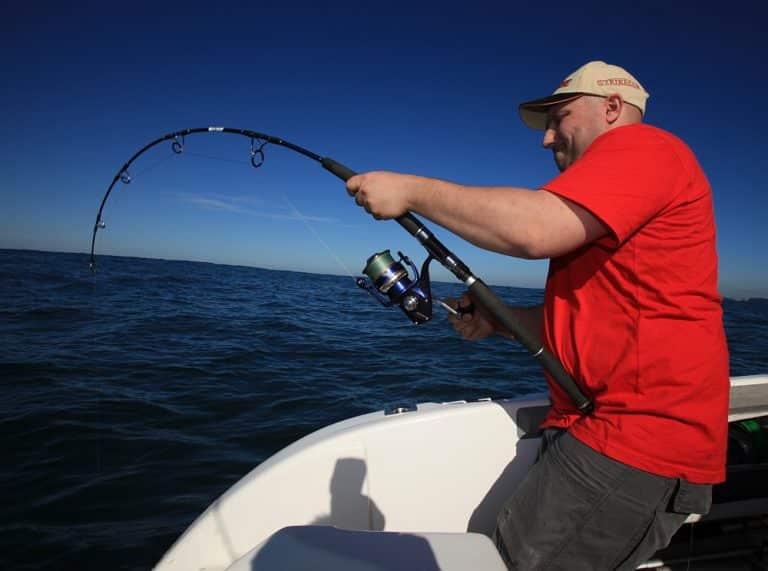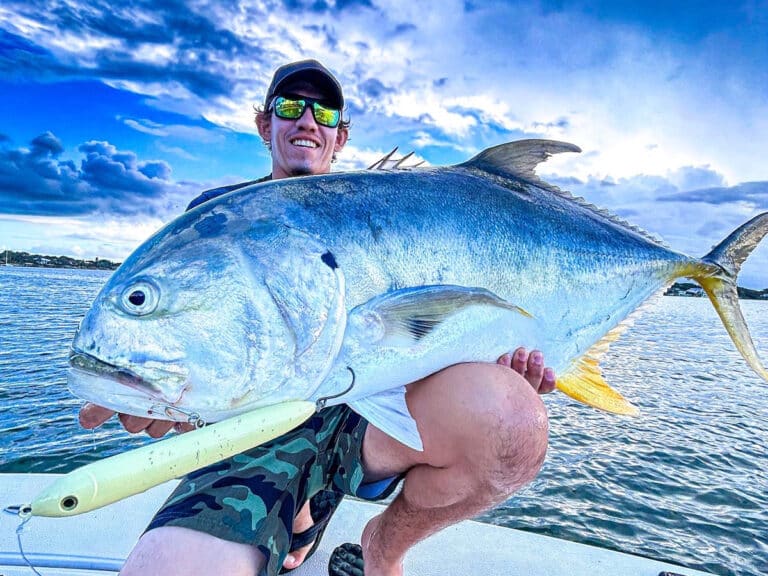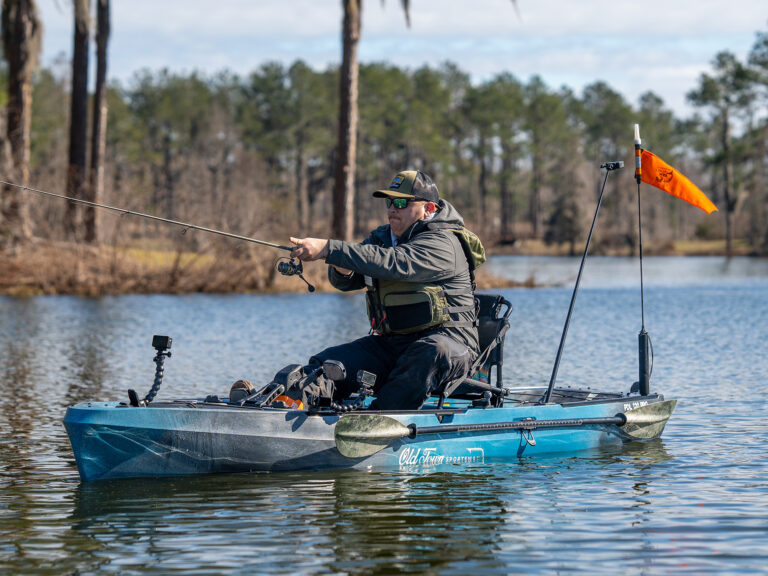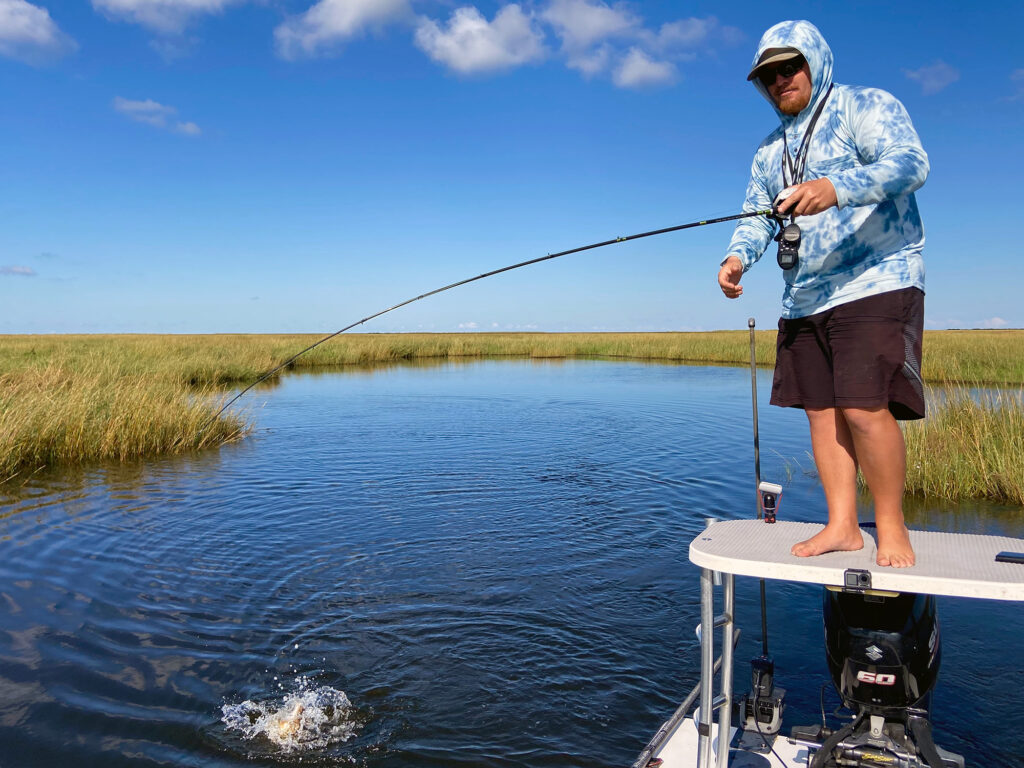
Ancient Greeks believed the sun god Helios, offspring of Hyperion and Theia, crossed the heavens every day in a burning chariot. With our modern sensibilities, we snicker and guffaw at our simple-minded forebears for ascribing deity status to a sky-crossing orb of flame. Oh, the naivety!
Actually, a significant cohort exists among south Louisiana anglers who rival the early Grecians in their love, worship and adoration for the almighty Helios. These are the guys who push their boats and motors to the absolute limits to access glorified mud puddles deep in the Louisiana marsh, places that seem inaccessible and entirely too shallow to support any fish bigger than a bluegill.
But somehow, these backwaters — colloquially referred to as “duck ponds” — are exactly where thick-bodied redfish want to be, engaging in a Sisyphean quest to fill their bottomless bellies. The duck ponds are an all-you-can-eat buffet of crabs, shrimp, killifish and finger mullet, and the reds push into them in numbers from one to hundreds and absolutely terrorize the local baitfish population.
Sight Fishing for Louisiana’s Redfish
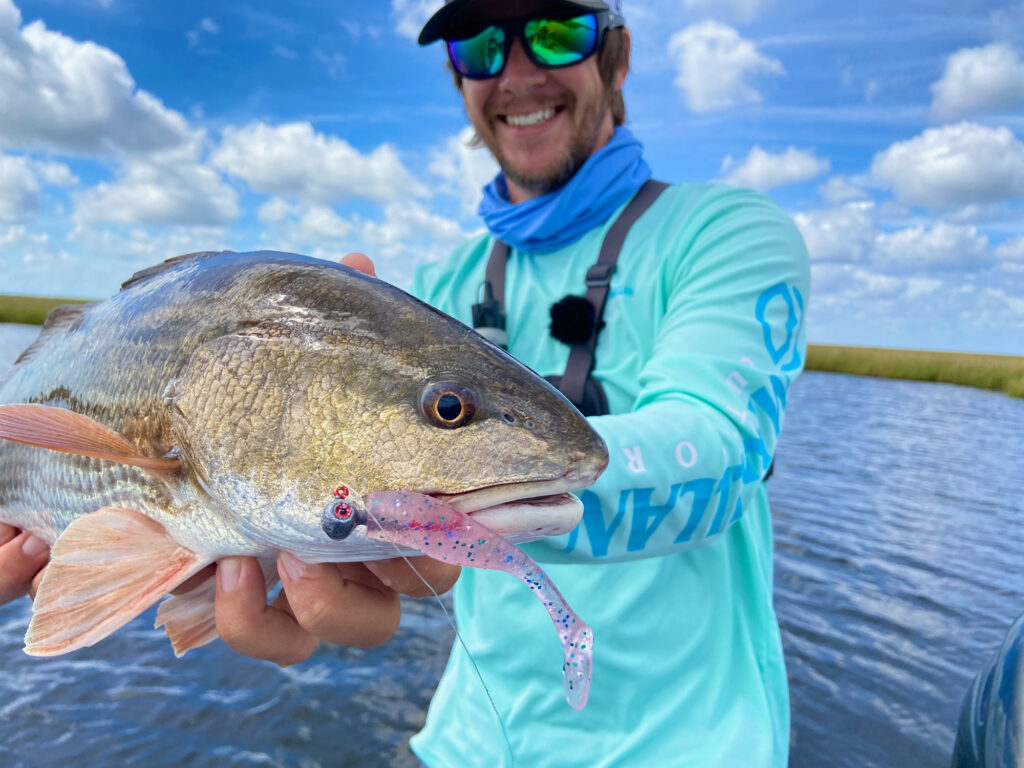
In these backwater ponds, which are often filtered by submerged aquatic vegetation, water clarity can range from gin-clear to tannic, and the redfish in them glow like stop signs — but only when the sun’s out. In fact, under a cloudless sky, the fish are so easy to spot, shallow-water anglers won’t even make a blind cast. I mean, what’s the point? They’ll simply pole around in the really shallow stuff or use a trolling motor in water that’s deep enough for it, and scan the water through polarized sunglasses, searching for the fish. Baits dangle patiently at the ends of rods, eagerly awaiting the moment a fish is spotted and they can fulfill their purpose.
Accurate casts are absolutely critical, and placement depends entirely on the demeanor and angle of the fish. Generally, an angler wants to cast past the red at a trajectory that will allow the lure to be retrieved a couple feet ahead of the fish. On some days, it’s best to drop the lure when the fish first sees it, and on others, bites are triggered when the angler plays keep away with the lure. Bites are intense, as the clear water allows every aspect of the take to be witnessed — the charging at the bait, the flaring of the gills and the vanishing of the lure as it’s sucked, along with the water around it, into the gaping maw of a hungry redfish.
Then the fights are the ultimate in intensity. Hook a redfish in a deep bayou, and it will head immediately for the bottom, trying to pull you, your rod and your boat down with it. But in the shallows, that’s not an option, so the fish strips as much line as it can on its first run, and then circles the boat like a distance runner on an Olympic track. That’s especially true with fish that locals call “overs” — redfish that stretch beyond the 27-inch maximum size limit.
Oversize Redfish in the Marsh
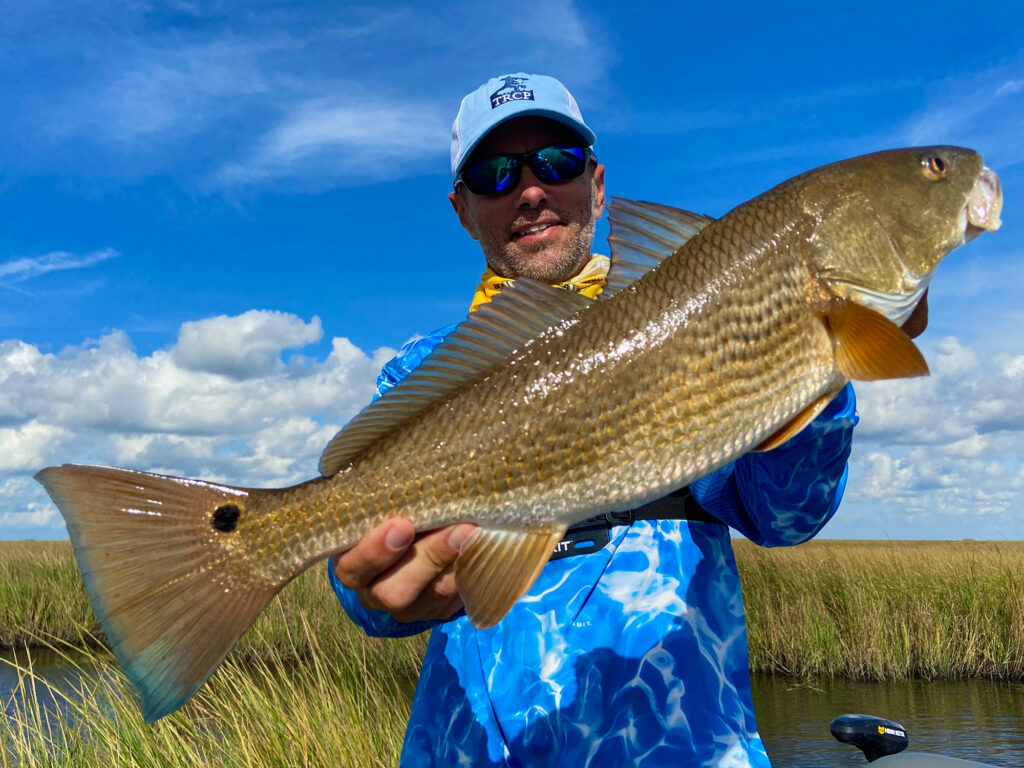
Biologists say that’s right around the size that redfish mature sexually and get the urge to move out to the Gulf to spawn. But many are late-bloomers that seem stuck in perpetual adolescence and refuse to put on their big-boy pants. Sometimes fish up to 35 inches are encountered in the ponds.
Regardless of size, these shallow, clear-water fish are the prettiest seen anywhere. Like chameleons, their skin changes color to suit their environment. Deep-water or dirty-water reds will be silver in color, with dark-bronze or brown backs, but in the shallows, the fish are bright orange, with the rich color often extending all the way around their normally white bellies.
This trait obviously gives them some camouflage advantage when targeting prey, but it completely betrays them when they themselves are the prey. Even Ray Charles could spot them. But only when the sun’s out. On cloudy days, the fish are nearly impossible to see, and lots of blind casts are necessary for success. It’s still fun and productive, but there’s nothing like casting to a fish you see and watching it suck in a lure. That’s why shallow-water redfish anglers are strict adherents to a religion, and Helios is their god.

